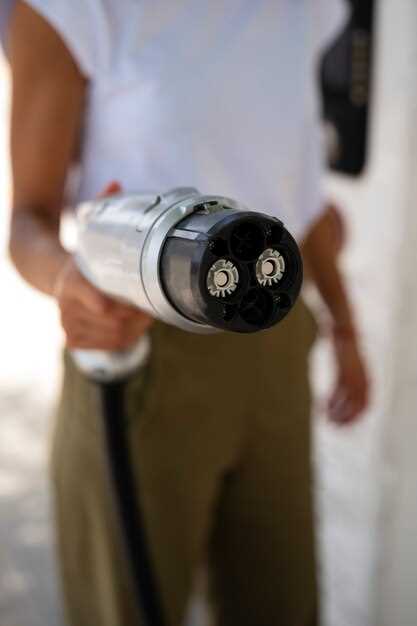How to Take Care of Your Hybrid Battery

Hybrid vehicles have gained immense popularity due to their ability to combine fuel efficiency with reduced emissions. At the heart of this technology lies the hybrid battery, a crucial component that directly influences the vehicle’s performance. Ensuring the longevity of this battery not only enhances your driving experience but also saves you money on potential replacements. Proper maintenance practices are essential for maximizing battery life and efficiency.
Understanding the nature of hybrid batteries is the first step in preserving their lifespan. Unlike traditional car batteries, hybrid batteries are designed for different usage patterns, often cycling between charging and discharging. Therefore, it’s important to avoid practices that can harm the battery’s health, such as deep discharges or excessive charging. A balanced charging routine can significantly contribute to the battery’s longevity.
Additionally, temperature control plays a vital role in battery maintenance. Extreme weather conditions can adversely affect battery performance and lifespan. Keeping your hybrid vehicle in a controlled environment, avoiding prolonged exposure to high temperatures, and opting for temperature-regulating equipment can help mitigate these issues. By adhering to these maintenance tips, you can ensure that your hybrid battery remains efficient and reliable over time.
Monitor Your Battery Health Regularly
Regular monitoring of your hybrid battery health is essential for its longevity and optimal performance. Start by checking the battery voltage and capacity using a specialized diagnostic tool or software. This will help you identify any significant drops in performance early on, allowing for timely maintenance or replacement.
Pay attention to the battery’s state of charge (SOC) and state of health (SOH). SOC indicates how much energy the battery holds at any given time, while SOH reflects the overall condition of the battery compared to its original state. Keeping these metrics in check can provide insights into your battery’s efficiency and lifespan.
Additionally, observe the battery’s temperature during operation. Excessive heat can lead to accelerated degradation, so ensure that your hybrid vehicle’s cooling system is functioning properly. Look for any warning lights or indicators on your dashboard that may signify battery issues, and address them immediately.
Lastly, consider periodic professional assessments. Technicians can perform comprehensive tests that may not be accessible through basic monitoring tools, offering a more in-depth understanding of your battery’s status. By staying proactive in monitoring your hybrid battery health, you can enhance its lifespan and ensure your vehicle runs smoothly.
Avoid Extreme Temperatures for Optimal Performance

Maintaining the optimal performance of your hybrid battery is crucial for extending its lifespan. One of the most significant factors that can influence battery health is temperature. Extreme temperatures, both hot and cold, can lead to accelerated degradation of the battery cells.
In high temperatures, typically above 86°F (30°C), the chemical reactions within the battery are accelerated, leading to increased wear and potential thermal runaway. This condition can not only reduce the efficiency of the battery but may also result in safety hazards. Conversely, low temperatures, below 32°F (0°C), can reduce the battery’s ability to hold a charge and affect its capacity and overall performance.
To mitigate these risks, consider the following guidelines:
| Temperature Range | Effects on Battery | Recommended Actions |
|---|---|---|
| Above 86°F (30°C) | Increased wear and potential thermal runaway | Park in shaded areas or garages, use reflective sunshades, and avoid charging in high heat. |
| Between 32°F (0°C) and 86°F (30°C) | Optimal performance and longevity | Maintain normal operating conditions, park in well-ventilated areas. |
| Below 32°F (0°C) | Reduced capacity and performance, slower energy delivery | Store the vehicle in warmer areas, precondition the battery before use, and avoid rapid acceleration. |
By carefully managing exposure to extreme temperatures, you can enhance the longevity and efficiency of your hybrid battery, ensuring a reliable performance in all driving conditions.
Charge Your Battery Appropriately to Extend Lifespan
Charging your hybrid battery correctly plays a crucial role in prolonging its lifespan. One of the key factors is to avoid allowing the battery to drop to extremely low levels before recharging. Ideally, you should aim to keep your battery’s charge level between 20% and 80%. This practice helps minimize stress on the battery cells, reducing the risk of degradation.
It’s also essential to use the manufacturer’s recommended charging equipment. Mismatched chargers can provide inconsistent power delivery, leading to overheating and damage over time. Regularly check the charger for wear or dirt, which can interfere with proper charging, and clean it as needed to maintain optimal performance.
Incorporating a routine charging schedule can significantly benefit your battery’s health. Whenever possible, plug in your vehicle during long periods of inactivity. This helps maintain the battery’s charge without allowing it to excessively deplete or overcharge. Additionally, limit exposure to extreme temperatures during charging; both hot and cold environments can adversely affect battery efficiency and longevity.
Lastly, if your hybrid vehicle features a regenerative braking system, take advantage of it. This system captures energy typically lost during deceleration and reuses it to recharge the battery. Regular use of this feature, combined with appropriate charging habits, will optimize your battery performance and extend its overall life. Consistent and mindful charging practices are key to maximizing the durability and efficiency of your hybrid battery.
Limit Short Trips to Reduce Battery Strain
Short trips can significantly impact the lifespan of your hybrid battery. When a vehicle operates for only a short duration, the engine does not reach its optimal operating temperature, which can lead to inefficient combustion and energy use. This is particularly crucial for hybrids that rely heavily on electric power for low-speed driving. Here are some considerations to help you manage your battery’s health:
- Understand Battery Dynamics: Hybrid batteries operate best when they have a chance to discharge and recharge fully. Short trips typically hinder this cycle, preventing the battery from maintaining its health.
- Plan Longer Journeys: Whenever possible, combine errands or plan longer drives. This allows the battery to run through its charging cycles effectively, providing a more balanced usage.
- Utilize Public Transport: For very short distances, consider alternative modes of transportation, such as walking or public transit, to reduce the reliance on your vehicle.
- Monitor Driving Habits: Make a conscious effort to minimize unnecessary short trips. Use apps to track your driving and identify patterns that may contribute to frequent short journeys.
- Charge Regularly: If your hybrid allows, ensure you charge your battery adequately before embarking on longer trips. A well-charged battery performs better and is less strained during drives.
By limiting short trips, you help prolong your hybrid battery’s lifespan, promoting overall vehicle efficiency and performance. Maintain awareness of your driving patterns, and make adjustments as necessary to optimize battery health.
Use Regenerative Braking When Possible
Regenerative braking is a key feature in hybrid vehicles that contributes to extending the lifespan of your battery. This system captures the energy normally lost during braking and channels it back into the battery, effectively recharging it. By utilizing this technology, drivers can enhance overall energy efficiency and reduce battery depletion.
To maximize the benefits of regenerative braking, it is essential to anticipate stops and slow down gradually rather than relying solely on traditional brakes. This approach allows the electric motor to engage effectively, converting kinetic energy into stored electrical energy. Regularly practicing smooth acceleration and deceleration can help you optimize this feature.
Additionally, be mindful of driving conditions that permit regenerative braking, such as downhill slopes or areas with frequent traffic signals. Engaging regenerative braking during these moments not only conserves energy but also reduces wear on conventional braking components, further avoiding unnecessary battery drain.
Incorporating regenerative braking into your driving habits enhances energy efficiency and prolongs battery life, leading to improved performance and reduced maintenance costs over time. Embrace this technology to make the most of your hybrid vehicle’s capabilities.
Keep Software Updated for Better Battery Management
Regularly updating your vehicle’s software is crucial for optimal hybrid battery management. Manufacturers frequently release firmware updates that enhance the performance of the battery management system, ensuring that it operates efficiently. These updates often address known issues, improve energy consumption, and optimize charging cycles, which can significantly extend the lifespan of your hybrid battery.
In addition to improving battery efficiency, software updates may also introduce new features that provide better diagnostics and monitoring of the battery’s health. This can help you identify potential problems early, allowing for timely maintenance or replacement, which ultimately prevents premature battery failure.
Keeping your software current also helps improve compatibility with charging stations and other technology, ensuring that you can take advantage of the latest advancements in hybrid technology. This can lead to further enhancements in battery management, including improved charging efficiency and reduced wear and tear.
To ensure you don’t miss any critical updates, set your vehicle’s software to automatically check for updates or regularly visit the manufacturer’s website for announcements. By staying up-to-date, you’ll not only boost the performance of your hybrid battery but also gain peace of mind knowing that your vehicle is operating with the latest technological advancements in energy management.

